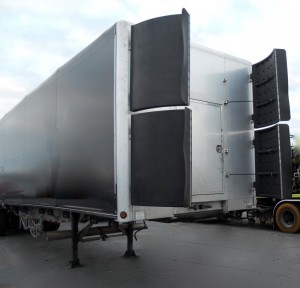The Caterpillar SDP engine, specifically the C15 ACERT with a Diesel Particulate Filter (DPF), marked Cat’s final highway engine and quickly gained notoriety for its reliability issues. This article delves into the challenges faced by truck owners operating with the Sdp Cat Engine, exploring the root causes and potential solutions.
The SDP Cat Engine: Early Troubles and Downtime
The SDP engine’s introduction was met with widespread problems, particularly for one owner-operator who purchased a 2008 Peterbilt equipped with the 600 hp Cat SDP. This truck experienced an alarming 28 breakdowns and 10 tows on its maiden voyage from New Jersey to California. Over the next three and a half years, constant downtime limited the truck to a mere 202,000 miles. Extended stays at Peterbilt and Caterpillar repair shops, sometimes exceeding three weeks, became the norm due to the complexity of the engine’s issues.
EPA Regulations and the Trucking Industry
While Caterpillar’s reputation for building robust engines remained intact, the SDP’s problems stemmed from the stringent EPA emissions regulations. Technologies like EGR, ACERT, and DPF, while designed to reduce emissions, negatively impacted engine performance and reliability. The increased complexity and frequent repairs associated with these systems placed a significant financial burden on truck owners and the industry as a whole.
The High Cost of SDP Engine Repairs
The financial strain extended beyond downtime, as the cost of parts for post-2002 engines, including the SDP, skyrocketed. Warranty claims surged, leading manufacturers to pass on the increased costs to consumers through higher parts prices. Owner-operators faced a double whammy: reduced fuel efficiency due to emissions systems and inflated expenses for parts and repairs. Conservative estimates placed annual losses at $12,000 or more for trucks with these engines.
Fuel Efficiency Woes and the DPF
The aforementioned 2008 Peterbilt initially achieved a dismal 4.2 mpg, consuming approximately $8,000 worth of fuel solely during DPF regeneration cycles. After significant upgrades, fuel efficiency improved to 6.2 mpg. However, the truck’s 3:36 gear ratio further hampered fuel economy. Optimizing driving techniques, such as utilizing lower gears for hill climbs, ultimately pushed fuel efficiency into the low 7 mpg range.
Finding Solutions for the SDP Engine
Despite the initial challenges, solutions emerged. The owner of the problematic Peterbilt implemented modifications that drastically improved fuel efficiency and reliability. By achieving 7.3 mpg, the truck significantly reduced fuel consumption compared to its initial 4.2 mpg, demonstrating that improvements were possible.
Beyond Caterpillar: Other Engine Struggles
The SDP Cat engine wasn’t the only one plagued by problems. Other manufacturers, like Detroit Diesel with its DDEC-V EGR engine, also faced issues. One owner-operator experienced repeated failures, including camshaft wear, scored cylinder liners, and multiple EGR valve replacements, ultimately leading to engine replacement and legal action.
Conclusion: Overcoming SDP Engine Challenges
The Cat SDP engine presented significant challenges for truck owners due to its initial reliability issues and the complexities of EPA emissions regulations. However, through modifications, optimized driving techniques, and persistent problem-solving, some owners found ways to improve fuel efficiency and reduce downtime. The SDP’s story serves as a reminder of the delicate balance between environmental regulations and the economic realities of the trucking industry.

